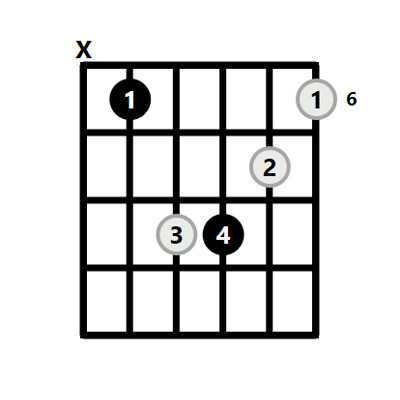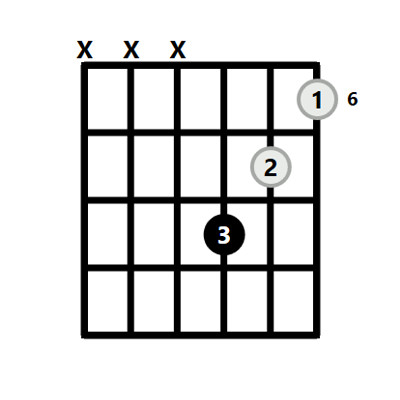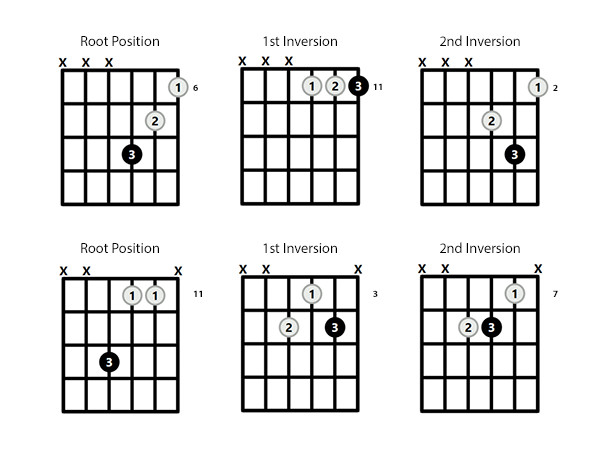The D#m guitar chord, also known as the D sharp minor chord, might seem a bit elusive at first glance. While it shares its sound with the more common E flat minor chord (Ebm), understanding and mastering D#m opens up new musical possibilities, especially when playing in keys like B major or D# minor. This comprehensive guide will break down everything you need to know about the D#m chord, from its theoretical underpinnings to practical ways to play it across the guitar fretboard.
D#m Chord Theory: Unpacking the Basics
Before diving into finger positions, let’s understand what makes up a D#m chord. Like all minor chords, D#m is built upon a specific formula rooted in music theory:
- Notes: The D# minor chord comprises three notes: D#, F#, and A#.
- Scale Degrees: These notes correspond to the 1st (root), flat 3rd, and 5th degrees of the D# Major scale.
- Intervals: Starting from the root note (D#), the intervals within a D#m chord are: minor 3rd, Major 3rd, and Perfect 4th (returning to the root in the next octave).
- Relative Major: D# minor is the relative minor of F# Major. This relationship is key for understanding chord substitutions and progressions.
- Key Chord: D#m is the foundational chord, or the i chord, in the key of D# minor. The complete set of chords in the key of D# minor are: D#m, E# diminished, F#+, G#m, A#, B, and Cx diminished.
Why D#m and Not Ebm? Enharmonic Equivalency Explained
You might be wondering why learn D#m when Ebm sounds the same and is more frequently used. This comes down to enharmonic equivalence. In music, enharmonic notes are notes that have the same pitch but different names (like D# and Eb). While D#m and Ebm are enharmonically equivalent, the choice between them often depends on the musical key you’re playing in.
For instance, if you’re playing in the key of B major, chords with sharps (like D#m) are more theoretically consistent and easier to read than using flats. Understanding D#m broadens your musical vocabulary and allows you to navigate different key signatures with confidence.
Exploring D#m Chord Shapes on Guitar
Since none of the notes in D#m (D#, F#, A#) are found on open guitar strings, you’ll typically encounter D#m as a barre chord. However, there are several variations and easier shapes to get you started.
The Standard D#m Barre Chord Shape
The most common way to play D#m is as a root-5 barre chord. This shape is movable, meaning you can use the same finger pattern to play other minor chords by simply shifting it up or down the fretboard. For D#m, you’ll start this barre shape on the 6th fret.
 D Sharp Minor Chord Guitar
D Sharp Minor Chord Guitar
The “Easy” D#m Chord Shape (Mini Barre)
If full barre chords feel challenging initially, the “easy” or “mini” D#m chord is an excellent starting point. This simplified version uses just the top three strings and captures the essence of the D#m sound. You’ll fret the 6th fret on the 1st string, the 7th fret on the 2nd string, and the 8th fret on the 3rd string. This shape is essentially the top portion of the standard barre chord.
 Easy D Sharp Minor Chord
Easy D Sharp Minor Chord
This mini-barre shape is a fantastic way to introduce yourself to the D#m chord and begin incorporating it into your playing.
Step-by-Step Guide to Playing the Standard D#m Chord
Let’s break down the standard D#m barre chord into a step-by-step approach:
- Barre: Place your index finger across all five strings at the 6th fret. Ensure you’re applying enough pressure for a clean sound from each string.
- Third Finger: Position your ring finger on the 8th fret of the 4th string.
- Fourth Finger: Place your pinky finger on the 8th fret of the 3rd string.
- Second Finger: Place your middle finger on the 7th fret of the 2nd string.
- Strum: Strum down from the 5th string to the 1st string. Avoid strumming the 6th string for this particular voicing.
Practicing this step-by-step method helps ensure you’re accurately forming the chord and developing proper finger placement.
Additional D#m Barre Chord Positions
Beyond the standard root-5 barre chord, D#m can also be played using a root-6 barre chord shape. This variation starts on the 11th fret and provides a different voicing of the chord, adding tonal variety to your playing.
 D Sharp Minor Barre Chord
D Sharp Minor Barre Chord
Experimenting with both root-5 and root-6 barre chord shapes expands your fretboard knowledge and gives you more options for playing D#m in different musical contexts.
D#m Triads: Exploring Chord Voicings
Delving into D#m triads is a great way to deepen your understanding of the chord and explore different voicings across the fretboard. Triads are three-note chords, and by rearranging the order of the notes (inversions), we can create unique sonic textures. The three inversions of the D#m triad are:
- Root Position: D#, F#, A#
- 1st Inversion: F#, A#, D#
- 2nd Inversion: A#, D#, F#
By playing these inversions on different string sets, you can discover six distinct D#m triad shapes.
 D Sharp Minor Triad
D Sharp Minor Triad
Exploring triads enhances your understanding of chord construction and provides valuable tools for improvisation and songwriting.
Keys Where the D#m Chord Fits
Knowing which keys naturally include the D#m chord is crucial for practical application. You’ll find D#m in the following keys:
- D# minor: (D#m, E#dim, F#, G#m, A#m, B, C#)
- G# minor: (G#m, A#m, B, C#m, D#m, E, F#)
- A# minor: (A#m, B#dim, C#, D#m, E#m, F#, G#)
- F# Major: (F#, G#m, A#m, B, C#, D#m, E#dim)
- B Major: (B, C#m, D#m, E, F#, G#m, Adim)
- C# Major: (C#, D#m, E#m, F#, G#, A#m, B#dim)
Understanding these key relationships allows you to confidently incorporate D#m into your chord progressions and songwriting.
Alternative D#m Chord Shapes
While barre chords and triads are essential, there are also alternative D#m shapes that offer different voicings and fingerings. These might not be as common, but they can be useful in specific musical situations or when transitioning from other chords. Exploring these alternative shapes expands your fretboard fluency and creative options.
D#m Chord Substitutions: Adding Harmonic Color
To add depth and emotion to your playing, consider using chord substitutions for D#m. Extended D# minor chords like D#m7, D#m9, D#m11, and D#m6 can often be used in place of a standard D#m chord, adding subtle nuances and harmonic richness.
Furthermore, since F# Major is the relative major of D# minor, variations of the F# chord such as F#6, F#69, and F#maj9 can also serve as effective and interesting substitutions for D#m, particularly in certain chord progressions.
Scales to Play Over the D#m Chord
Choosing the right scales to solo or improvise over a D#m chord is crucial for creating melodies that complement the chord’s minor character. Effective scales for D#m include:
- D# natural minor scale (D# Aeolian mode)
- D# harmonic minor scale
- D# melodic minor scale
These scales provide the notes and melodic frameworks that will sound harmonically consonant and emotionally resonant when played over a D#m chord.
Further Exploration
To continue your journey with the D#m chord and related concepts, explore these resources:
- D# minor arpeggio
- How minor chords work
- Chords page
- D#m7 Chord
- D#m/F# chord
- D#m/A# chord
By mastering the D#m guitar chord, you’ll expand your musical vocabulary, enhance your understanding of music theory, and unlock new creative possibilities on the guitar. Practice these shapes, explore the theory, and start incorporating D#m into your playing today!
[
